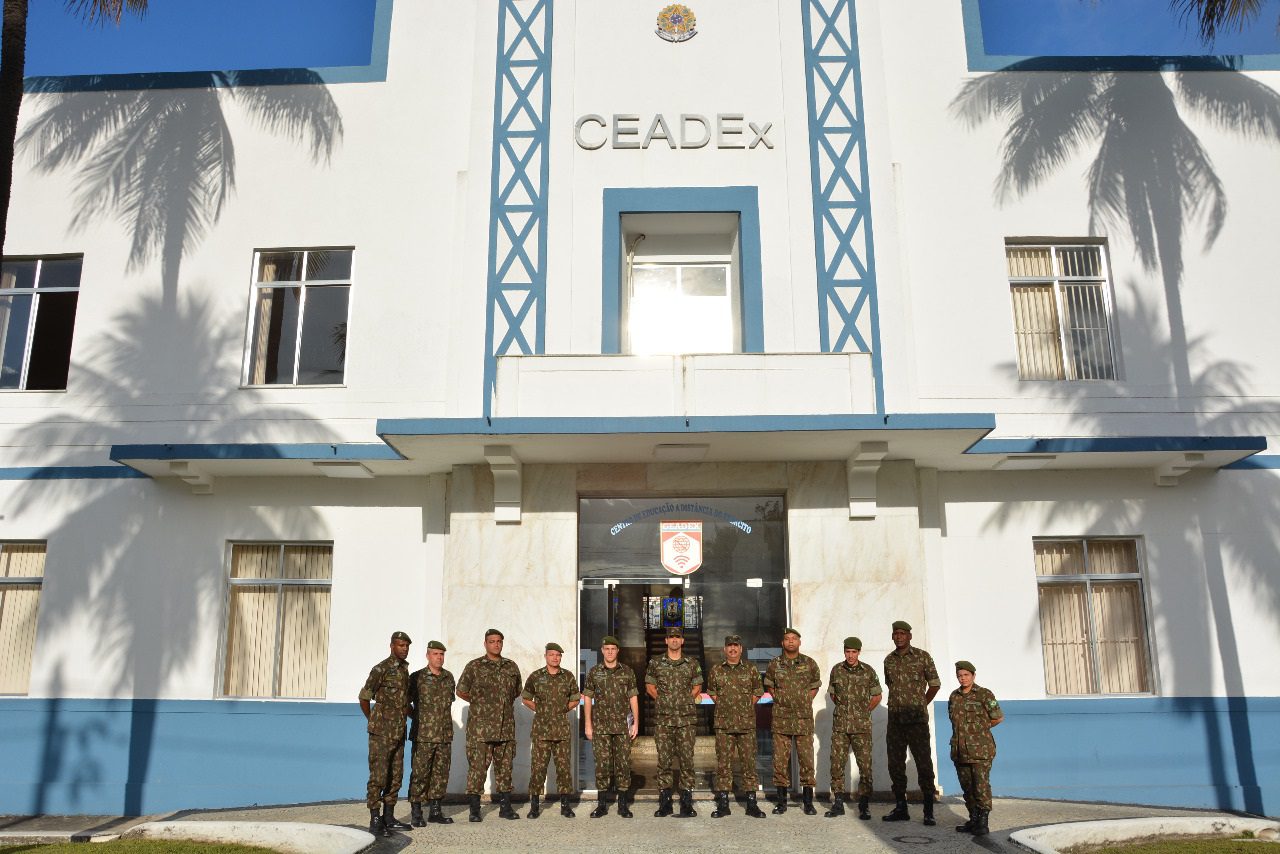Ten Cel Angelo André da Silva
“No machine is better than a man with a machine.”
Richard Bookstaber, Massachusetts Institute of Technology (MIT)
The Army Distance Education Center (NuCEADEx) began its activities on July 1, 2015, occupying the former headquarters of the School of Communications (EsCom), within the structure of the barracks that currently houses the School of Logistics Sergeants (EsSLog).
Its operational orientation, as an organizational implementation project, aimed to provide the Army Education and Culture System (SECEx) with a military organization that would act in the coordination and guidance of Distance Education (EAD) and contribute to the training process of human resources within the Army.
On July 20, 2015, the NuCEADEx was transformed into the Army Distance Education Center (CEADEx) by means of Ordinance No. 900 of the Army Command. The creation of this Center sought to meet macro-objectives contained in the Army’s Strategic Planning for the years 2016 to 2019, among them the implementation of a new and effective Education and Culture System.
CEADEx, an educational institution directly subordinated to the Directorate of Military Technical Education (DETMil), offers technical-pedagogic support in distance education, providing efficiency and rationalization in the preparation of professionals and optimizing the formation, improvement and extension/specialization of the Army’s military.
These first paragraphs describe well the genesis and the first steps taken by this newly created OM of the Brazilian Army. However, this description cannot cover the exponential reach that CEADEx achieved in the last two years. The context of the covid-19 pandemic generated a demand for the creation of virtual classrooms, which made all the Center’s numbers superlative. Today, the EBAula platform has more than 1200 courses, 15 competitions, and 65 schools that include not only the teaching establishments, instruction centers, and OMs with teaching responsibilities, but also the general, sectorial, operational, and direct and immediate assistance directorates. It also integrates more than 80 thousand students working for the Land Force, the Brazilian Navy, the Air Force, the Military Police, the Military Fire Brigade, the Municipal Guard, and the Foreign Armed Forces, besides a significant civilian public that works or not in the Forces.
The second-order effect caused by this emergency technological demand produced fruits that were not yet on the SECEx radar as a whole, but that served to give a focus to specific initiatives aimed at the continuity of the teaching-learning process, even in the face of the restrictions faced at the time.
In this context, Digital Technology Assisted Education emerged as an aggregating solution, which was never intended to replace traditional teaching, but to enhance competence-based teaching.
Tools such as virtual reality, augmented reality, gamification, and artificial intelligence have become part of the creation and expansion of content, enabling greater protagonism on the part of the student, who can have more opportunities to “learn by doing” and supplant the hours of practice provided in the instruction sessions.
The recording of classes in our own studios or improvised rooms, accompanied by institutional platforms such as EBLive or Big Blue Button, also offers greater security in the transmission of sensitive issues present in a military instruction. Such devices are even allowed through Bring Your Own Device (BYOD) mode, when students and instructors can use their own electronic devices in instruction because they are more familiar with their use. All these possibilities led countless schools from the most varied Area Military Commands to seek out the Center, at the Vila Militar garrison, in the city of Rio de Janeiro, so as not to be left out of the digital transformation that is underway in Education.
The requirements of the enthusiastic instructors are very heterogeneous, since the Army has very different capabilities ranging from Chemical, Biological, Radiological and Nuclear Defense (CBRN), through the preparation of Attaché Auxiliaries and Equitation, to the Command Action and Special Forces Courses. All have a part of the course available in the Virtual Learning Environment (VLE).
Last year, CEADEx created the Digital Education Technology Internship, with 120 hours, open to volunteers by sending an application to the Directorate of Manpower and Movement Control (DCEM). The internship takes place once a semester, with 50 vacancies for officers and 50 for lieutenants and sergeants. Some significant initiatives by the graduates of the 2021 and 2022 internships, in their respective schools, are already stimulating the arrival of new interns for the next rounds.
*** Translated with www.DeepL.com/Translator (free version) ***
